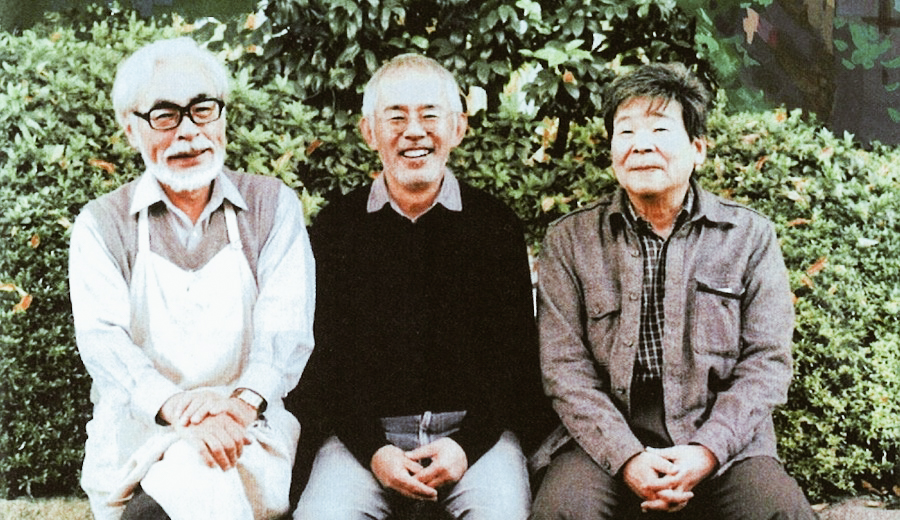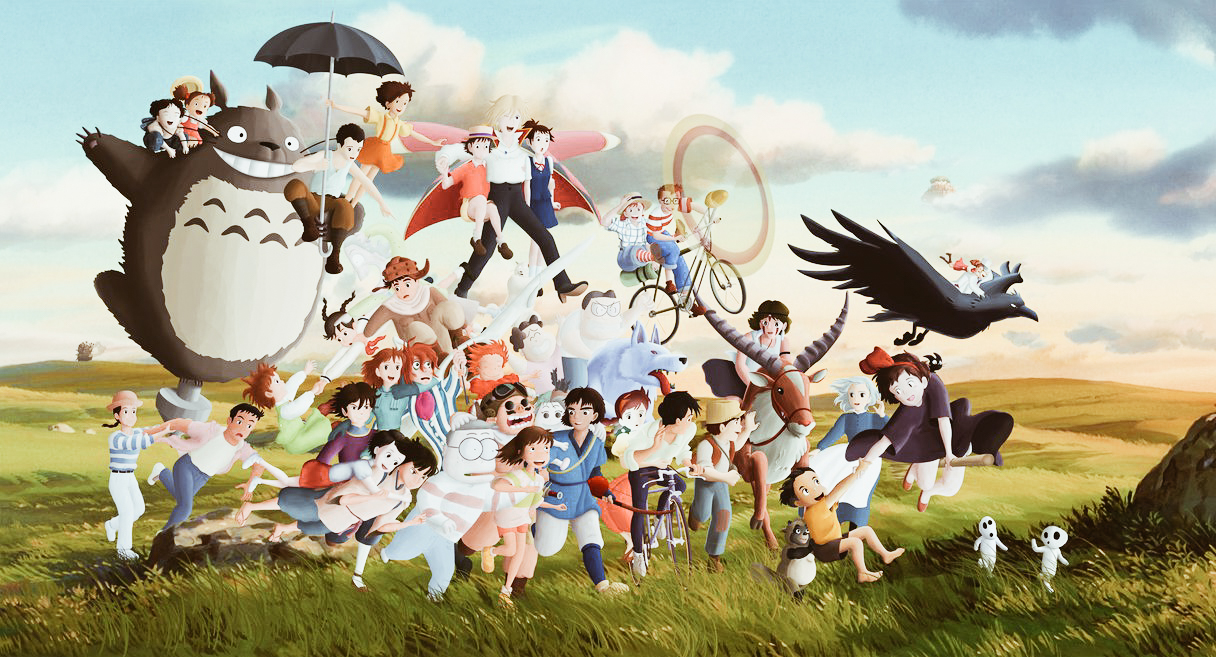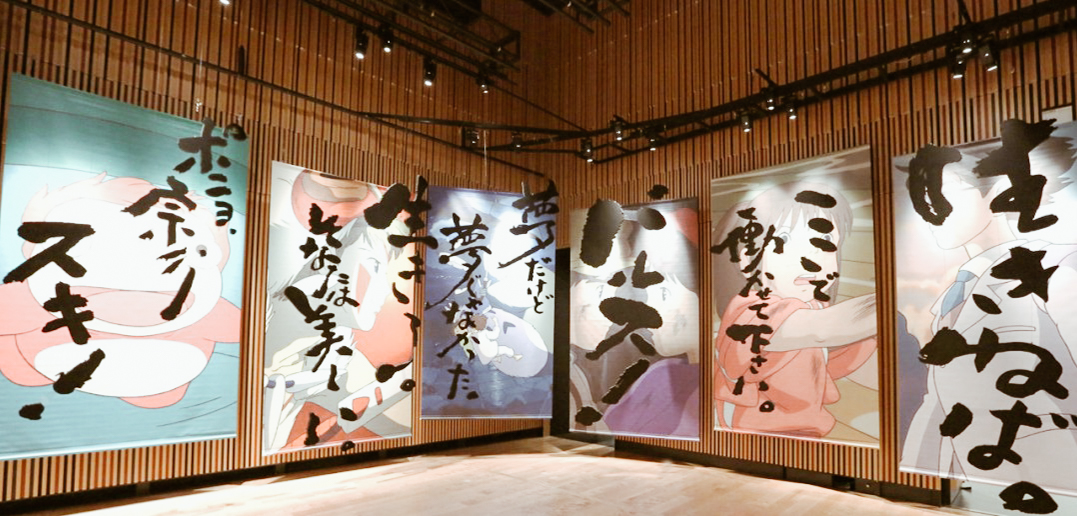Japan Modern Culture: Studio Ghibli

photo credits: ghibli.jp
Raise your hand if you didn’t fall in love with Howl, the sorcerer with his wandering castle, or who has not felt tenderness for Kaonashi, the Faceless of “The Enchanted City” … If you are among those who love the productions of Studio Ghibli too, then you are in the right place!
The Hot Wind of the Desert
June 15, 1985: Hayao Miyazaki, Isao Takahata, Toshio Suzuki and Yasuyoshi Tokuma decided to found 株式会社スタジオジブリ or Studio Ghibli Inc. whose name was chosen by Miyazaki with the intention of “creating a whirlwind in the world of Japanese animation”. The roots lie in the passion for aviation of the Japanese director and screenwriter, in fact “Ghibli” is not only the warm wind of the Sahara desert but, during the Second World War the Italian reconnaissance plane Caproni Ca.309 was nicknamed “Ghibli”. Curious, isn’t it?
At first no one thought that the project would been very successful, so to minimize the risk of failure, 70 temporary entertainers were employed and the office of the studio consisted of a 90 square meter office rented in Kichijoji, Tokyo.

photo credits: sgcafe.com
A success after another
Studio Ghibli began its official production with “Laputa – castle in the sky”, “My neighbor Totoro” and “Grave of the Fireflies”, three animated pearls acclaimed by critics. However, at first, these three wonderful pieces did not achieve the same success they accumulated over time.
It was “Kiki’s Delivery Service” that achieved great results in 1989 becoming the success of the year at the Japanese box office. This allowed for permanent contracts to be introduced into production and to hire new staff. By now the Studio had almost 300 people working and they began to think of moving to a new location just during the production of Porco Rosso, whose quality was not excellent due to the crowding in office.
In 1992 the new study, whose realization was followed in first person by Miyazaki who drew the final appearance, was ready. They were finally ready to move to Koganai (Tokyo). Computer-generated imagery (CGI), which allows a digitized two-dimensional image to be handled in any kind of three-dimensional view, was introduced with “Pom Poko”.
In 1994 and 1995 “Whisper of the Heart” was released. At the end of the 90s and the early 2000s the Studio Ghibli signed one of his most beloved masterpieces, achieving the deserved success also outside Japan: Princess Mononoke (1997), Spirited Away (2001) and Howl’s moving Castle (2004), directed by Hayao Miyazaki.
In 2006 was the turn of Gorō, son of Miyazaki, to direct the film Tales from Earthsea and, two years later, Studio Ghibli became the only Japanese animation studio to use exclusively traditional drawing techniques for their own productions.
Unfortunately, in 2013, on the occasion of the 70th International Film Festival of Venice, following the presentation of Studio Ghibli’s 19th animated film “The Wind Rises”, Miyazaki announced his retirement, with consequent displeasure of the fans. The producer said that his advanced age no longer allowed him to follow the long accomplishments of his films and so, on November 8th 2014, the Academy awarded him with the Oscar for his career.
2015 was a strange year for Studio Ghibli: Hiromasa Yonebayashi, director of “Arrietty” and “When Marnie Was There” left the production. During a conference in Tokyo, Miyazaki announced his commitment to a new project whose production could have required more than five years of work. In fact, in 2017, through an interview with producer Toshio Suzuki, we discovered that the new feature would have been an adaptation of the 1937 Japanese novel “Kimi-tachi wa do ikuruka?” by Genzaburo Hoshino.
We just have to wait for the surprises that years of experience and passion will gift us!

photo credits: tokyotreat.com
Ghibli Museum
Reachable with the JR Chuo line for the delightful town of Mitaka, the museum presents a variety of rooms that mix the vintage and steampunk style overflowing with references to Japanese folklore and everyday life. Inside, there is also a cinema where unpublished short films of about 15 minutes are screened.
Moreover, at different times of the year, special exhibitions are set up for limited periods of time! Getting tickets for the Museum is not easy as they are not sold in the venue. Reservations must be made some time before through the Lawson ticket offices online or in the Lawson convenience stores on the Japanese territory, or at specific ticket offices abroad where the tickets are placed at available only for 4 months a year.
For any specific information and for all updates, you can check the official website, also available in English here: http://www.ghibli-museum.jp/en/

photo credits: forbes.com
Exhibition of Studio Ghibli in Tokyo
The “Toshio Suzuki and Studio Ghibli Exhibition”, the first exhibition after 3 years of the study at the EDOCCO cultural exchange center, Kanda Myojin Temple in Tokyo, inaugurated on April 20 and it’s running until May 12. It’s a must for anyone who wants to be catapulted into the enchanting world of Ghibli. You can admire the illustrations and documentation revealing the behind the scenes of the plots and production processes of these masterpieces from its foundation until today.
A large merchandise section is also available, including special ema and omamori created in collaboration with the temple itself. Enthusiasts will also find themed menus at the EDOCCO café such as the “Makkuro na kuro goma ohagi no ocha set” in homage to Makkuro Kurosuke (Soot Sprites) or the “Tonari no Kakigori ”inspired by My neighbor Totoro.
It is possible to buy tickets for the exhibition both on-site and online at a cost of 1,300 ¥ for adults and ¥ 800 for students. Official website: https://ghibli-suzuki.com/

photo credits: amu-zen.com
Share this:
- Click to share on Facebook (Opens in new window)
- Click to share on Twitter (Opens in new window)
- Click to share on Tumblr (Opens in new window)
- Click to share on Pinterest (Opens in new window)
- Click to share on Telegram (Opens in new window)
- Click to share on WhatsApp (Opens in new window)
- Click to share on Reddit (Opens in new window)
- Click to print (Opens in new window)






